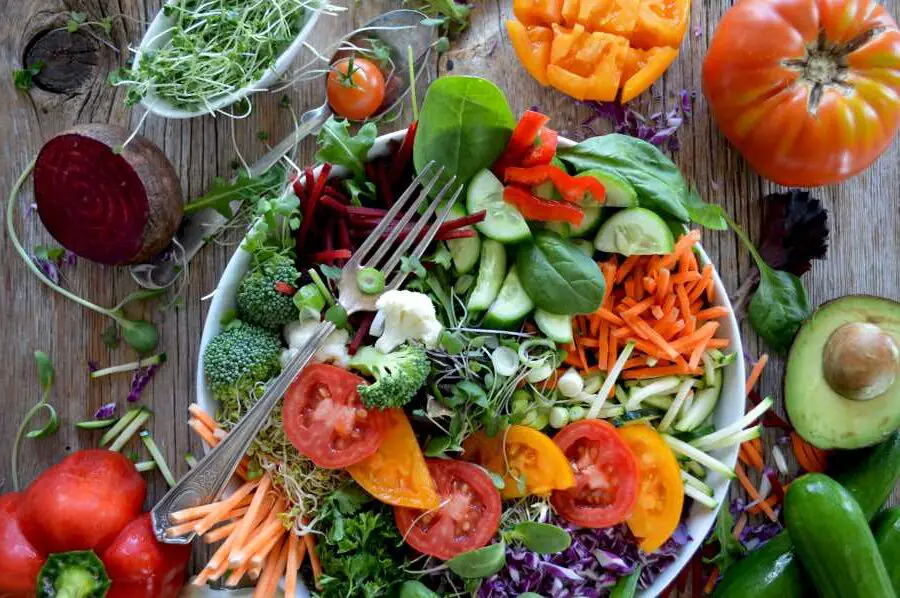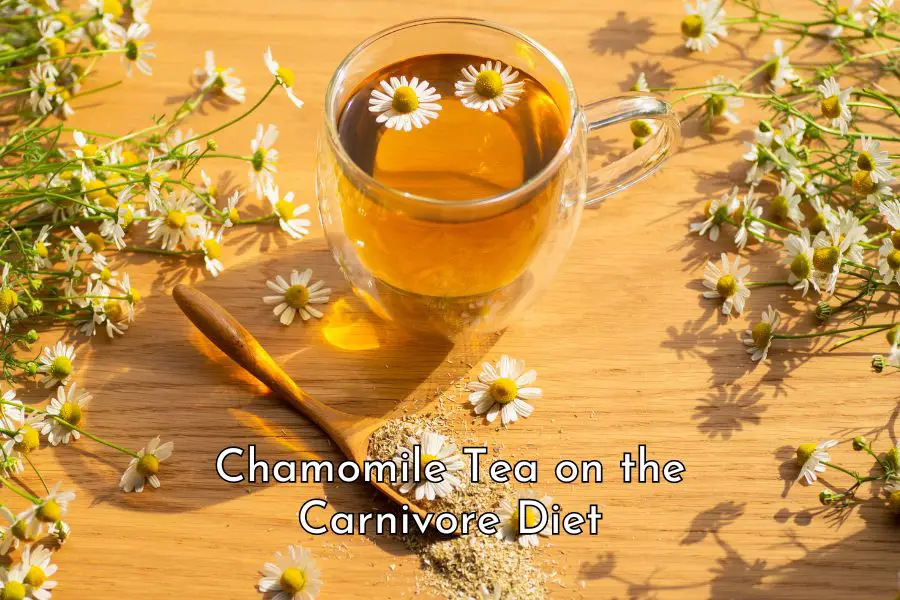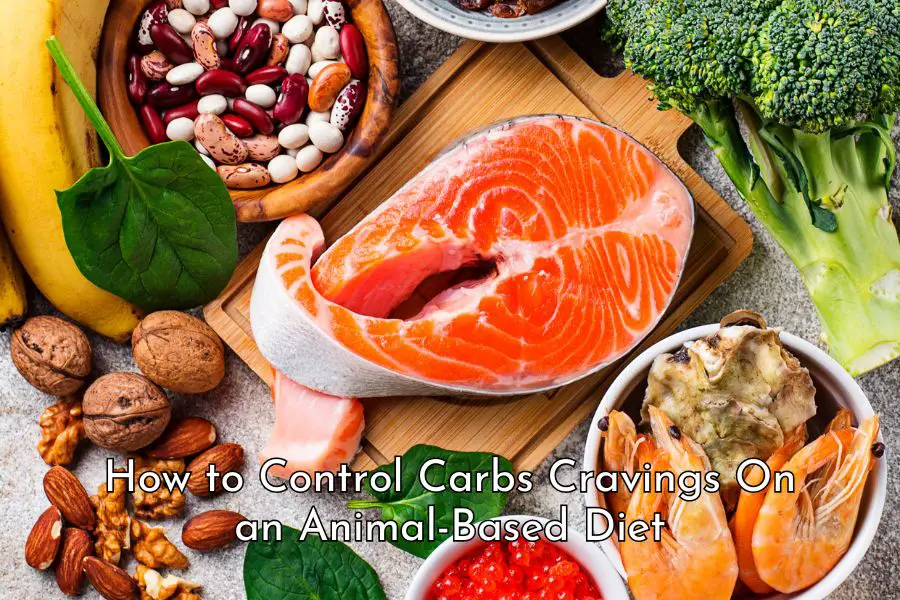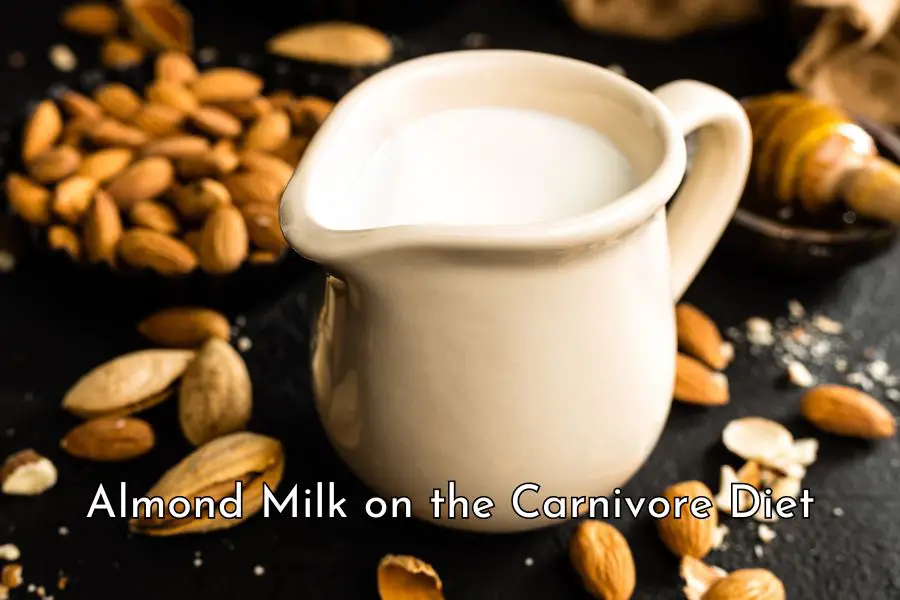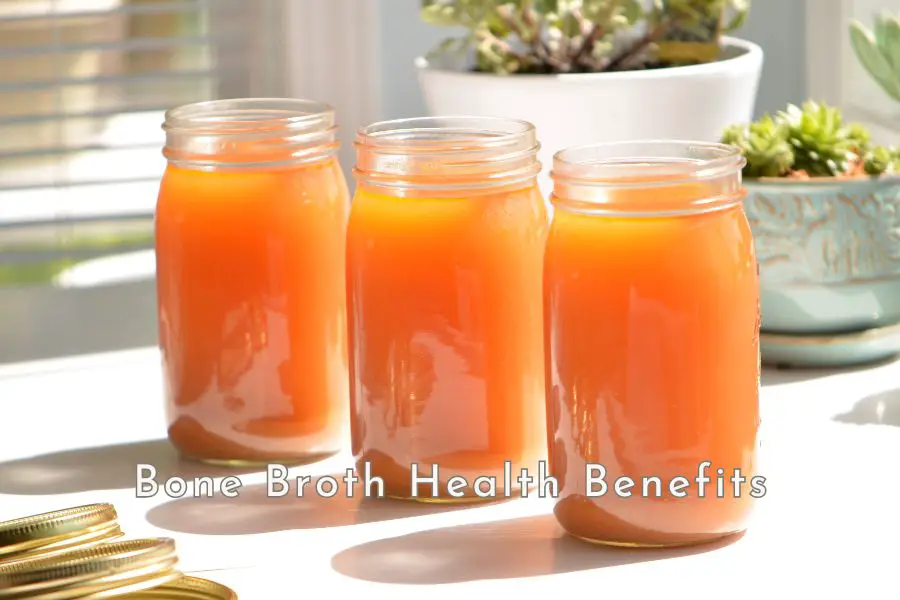One of the benefits of plant-based diets that nutritionists and medical professionals have been touting for years is phytonutrients.
If you are thinking of transitioning to the carnivore diet, you might be worried about the lack of those phytonutrients. In this article, let’s find out what they are, what their perceived benefits are, and whether you actually need them on the carnivore diet.
Phytonutrients are chemicals produced by plants to protect themselves from environmental threats. When you consume plant-based foods, phytonutrients in them cause inflammation and your body reacts by producing its own antioxidants to lower inflammation and hence resulting in their perceived benefits. However, phytonutrients have absolutely no nutritional value and your body doesn’t need them.
What Are Phytonutrients?
What are phytonutrients?
Phytonutrients are chemicals produced by plants to protect themselves from environmental threats like insects and the sun. [1]
It’s not clear who first coined the term “phytonutrients” but they used to be called phytochemicals. Phyto is a Greek word meaning plant. So phytonutrients are just that: chemicals from plants. For consistency, in the rest of the article, I still refer to them as phytonutrients.
Why do plants produce phytonutrients?
Plants produce these chemicals to protect themselves.
While animals have myriad ways of defending themselves without the use of chemical weapons, because plants are stuck to the ground, their main way to deter predators is to produce toxins that are harmful when consumed.
Plant toxins are present in all their parts: leaves, stems, flowers, fruits, seeds, and roots. They may look pretty but they simply don’t want to be eaten at all. They are certainly not there to feed humans or other species.
Phytonutrients commonly referred to in the media are a subset of those plant compounds that are supposed to have health benefits for humans.
Common Types of Phytonutrients and Their Sources
The table below shows some common types of phytonutrients and their food sources: [2, 3, 4, 5, 6, 7, 8, 9, 10, 11]
| Phytochemicals | Food sources |
| Carotenoids | Red, orange and yellow plants such as carrots, tomatoes, squash, spinach, broccoli, cabbage, radish, and turnips |
| Phytosterols | Vegetables, nuts, fruits, and whole grain products |
| Limonoids | Citrus fruits such as oranges, mandarins, limes, grapefruits, and pomelos. |
| Polyphenols (flavonoids, isoflavonoids, anthocyanidins) | Fruits, vegetables, whole grains, nuts, seeds, and legumes, beverages (tea, coffee, red wine), fats (dark chocolate, virgin olive oil, sesame seed oil), and spices and seasonings |
| Glucosinolates | Cruciferous vegetables such as broccoli, cabbage, cauliflower, bok choy, kale, mustard, Brussels sprouts, collards, watercress, and radishes |
| Phytoestrogen | Legumes, berries, whole grains, cereals, red wine, peanuts, red grapes |
| Terpenoids (Isoprenoids) | Mosses, liverworts, algae, lichens, and mushrooms |
| Polysaccharides | Three main polysaccharides are starch, cellulose and glycogen available in fruits, vegetables and grains |
| Saponins | Oats, leaves, flowers, and green fruits of tomato |
What Are the Perceived Benefits of Phytonutrients?
Despite their name, phytonutrients don’t contain any essential vitamins or minerals that the human body can’t live without. These chemicals are not present in animals, they are unique to plants as a part of their self-defense mechanism.
Below are some supposed benefits of phytonutrients: [12, 13, 14]
Antioxidants: some phytonutrients have antioxidant effects in your body, i.e. they neutralize free radicals which are unstable and very reactive molecules that can damage DNA and other cell components. Antioxidant phytonutrients can be found in many fruits, vegetables, cereal grains, edible macrofungi, microalgae, and medicinal plants.
Anti-inflammatory: inflammation is the body’s immune response to an irritant such as infection, injury, or chemicals. Many fruits, vegetables, and grains contain phytonutrients that cause anti-inflammatory reactions in your body.
Protective against cardiovascular diseases: polyphenols have been found to show protective activities for cardiovascular diseases. Foods rich in polyphenols are berries, cocoa powder, dark chocolate, nuts, flaxseeds, vegetables, olives, herbs, and spices.
Anti-cancer: some phytonutrients, for example, curcumin, can inhibit the growth of cancer cells and kill them. Some may suppress the expression of cancer-related genes.
Anti-aging: some phytonutrients have potential anti-aging properties. Some animal studies find that phytonutrients can extend the lifespan of various animal species. Foods that are often referred to as sources of anti-aging phytonutrients are berries, pomegranates, avocados, cruciferous vegetables, dark chocolate, kale, spinach, carrots, coffee, green tea, garlic, cinnamon, basil, ginger, and turmeric.
Protective against Alzheimer’s disease: a study using global data (FAO, WHO) shows that flavonols and combined flavonoid intakes are significantly and negatively correlated with rates of dementia.
However, it is important to note that these benefits are not conclusively proven because they have been derived not from randomized control trials on humans, but generally from observational studies which show some association and not a direct causation link between people’s diets and health outcomes. Further, there is also no evidence that antioxidant supplements, taken in isolation, have any health benefits.
According to The National Center for Complementary and Integrative Health, a US Federal Government’s lead agency for scientific research on non-conventional medicine: [15]
Research has shown that people who eat more vegetables and fruits have lower risks of several diseases; however, it is not clear whether these results are related to the amount of antioxidants in vegetables and fruits, to other components of these foods, to other factors in people’s diets, or to other lifestyle choices.
Rigorous scientific studies involving more than 100,000 people combined have tested whether antioxidant supplements can help prevent chronic diseases, such as cardiovascular diseases, cancer, and cataracts. In most instances, antioxidants did not reduce the risks of developing these diseases.
What Are the Risks of Consuming Phytonutrients?
While it is inconclusive whether the phytonutrients in plant-based foods have any health benefits, the health risks of plant toxins are real.
The so-called ‘edible’ plants are full of poisons. Even the ones widely advertised as ‘superfoods’ contain damaging toxins. Let’s have a look at some of those ‘superfoods’ below with their phytonutrient and anti-nutrient profiles. [16, 17, 18, 19, 20, 21, 22, 23, 24]
| Plant parts | Phytonutrients | Anti-nutrients |
| Leaves | Spinach is rich in vitamins and minerals (vitamin A, vitamin C, vitamin K1, folic acid, iron, magnesium, potassium, and calcium) and polyphenols. | Spinach contains a high level of oxalate which is an anti-nutrient. Although spinach has a high level of calcium, its calcium content has a very low level of bioavailability. Once consumed, oxalate in spinach binds with calcium and other minerals to form oxalate crystals, the main ingredient in kidney stones. Oxalate crystals can cause damage to the eyes, immune system, neurological system, GI tract, and connective tissues. |
| Stems | Broccoli, a member of the ‘cancer-fighting’ cruciferous vegetables, is well known for its vitamins and minerals (vitamin C, vitamin K1, folate, potassium and manganese) and it even has a modest amount of protein. Its phytonutrients include sulforaphane, indole-3-carbinol, carotenoids, kaempferol and quercetin. | Sulforaphane, a compound known for its anti-cancer property is there to protect broccoli from its predators, insects, bacteria, fungi, and animals, humans included. While it has the ability to kill cancer cells, it kills healthy cells too. Sulforaphane causes your body to produce glutathione to get rid of it. Excessive consumption of this ‘superfood’ will result in the depletion of glutathione, your body’s most potent antioxidant. |
| Fruits | Persimmons are loaded with nutrients (vitamin A, vitamin C, vitamin E, vitamin K, vitamin B6, thiamin, riboflavin, folate, potassium, copper, magnesium, and manganese) and phytonutrients (tannins, flavonoids, and carotenoids). | Tannins are a type of polyphenols that produce an astringent or bitter taste in persimmons and some other fruits. Tannins bind and precipitate proteins. They also bind with digestive enzymes and can interfere with digestion. Tannins are used in the leather industry for exactly that reason: to prevent the disintegration of the collagen fibers of the leather by binding them to the proteins in the skins. |
| Nuts | Almonds are rich in mono-unsaturated fatty acids, vitamin E, manganese, magnesium, and antioxidants. They are very versatile, you can eat them raw or roasted, as a paste, or use them in baking. Almonds are ranked as the number one healthiest food by scientists according to the BBC. | Almonds are amongst the foods with the highest level of phytic acid ranging from 1,200 to 1,400 milligrams of phytic acids in 100 grams of dry weight. Herbivores can digest phytic acid but humans can’t. Once consumed, phytic acid binds to minerals like phosphorus, iron, zinc, magnesium, and calcium and prevents absorption. A diet high in phytic acid can easily lead to a mineral deficiency for this reason. |
| Seeds | Sesame seeds are an excellent source of copper, manganese, magnesium, calcium, phosphorous, iron, zinc, selenium, and vitamin B1. They are also a good source of phosphorus, magnesium, iron, and zinc. | Sesame seeds contain a high amount of oxalic acid and phytic acid as well as other anti-nutrients like trypsin inhibitors, lectin, tannins, saponins. As noted above, these anti-nutrients block mineral absorption and cause digestive distress when consumed. However, the process of hulling, toasting and cooking can reduce the anti-nutrient contents of sesame seeds but at the same time also lower their nutrition values. |
| Roots | Sweet potatoes are known for their high level of beta-carotene and are also rich in vitamin C, manganese, copper, pantothenic acid, vitamin B6, biotin, fiber, potassium, and vitamins B3, B1, and B2. Sweet potatoes are a staple of the Okinawan diet which is famous for helping many of the island residents become centenarians. | Raw sweet potatoes have a very high oxalate content of 500mg per 100 grams whereas the recommended daily oxalate ingestion is no more than 100 mg. As previously mentioned, oxalate acids grab minerals from your body to form oxalate crystals which may be present in arteries, thyroid gland, and other body parts. Kidney stones are oxalate crystals deposited in the kidneys. A high oxalate diet can result in mineral deficiency, growth, digestive, reproductive, bone, and other health problems. |
No doubt, plants are full of nutrients but they are not there to serve humans. These nutrients are intended for their offspring and the harmful chemicals accompanying them are to deter predators.
It is clear that plants are very good at their biological warfare games because they’ve managed to survive until today.
“Plants are not just food for animals. The world is not green. It is colored lectin, tannin, cyanide, caffeine, aflatoxin, and canavanine.”
Janzen, D. H. (1977) Ann. Missouri Bot. Gard. 64, 706-736.
How Common Are Phytonutrients in Your Diet?
The concern about the presence of synthetic pesticides and other chemicals in conventionally farmed foods has resulted in the massive growth of global organic foods in recent years. [25]
According to the USDA, organic sales account for around 4 percent of total U.S. food sales and organic products are now available in 20,000 natural food stores and nearly 3 out of 4 conventional grocery stores. [26]
However, most people probably aren’t aware of the fact that we consume a minuscule amount of synthetic pesticides compared to natural pesticides i.e. phytochemicals or “phytonutrients”.
In the landmark study titled “Dietary pesticides (99.99% all natural)”, Dr. Ames and his team estimate that: [27]
Americans eat about 1.5 g of natural pesticides per person per day, which is about 10,000 times more than they eat of synthetic pesticide residues…
Even though only a tiny proportion of the plant toxins in our diet have been tested so far, the 27 natural pesticides that are rodent carcinogens are present in the following foods: anise, apple, apricot, banana, basil, broccoli, brussels sprouts, cabbage, cantaloupe, caraway, carrot, cauliflower, celery, cherries, cinnamon, cloves, cocoa, coffee, collard greens, comfrey herb tea, currants, dill, eggplant, endive, fennel, grapefruit juice, grapes, guava, honey, honeydew melon, horseradish, kale, lentils, lettuce, mango, mushrooms, mustard, nutmeg, orange juice, parsley, parsnip, peach, pear, peas, black pepper, pineapple, plum, potato, radish, raspberries, rosemary, sesame seeds, tarragon, tea, tomato, and turnip.
Thus, it is probable that almost every fruit and vegetable in the supermarket contains natural plant pesticides that are rodent carcinogens. The levels of these 27 rodent carcinogens in the above plants are commonly thousands of times higher than the levels of synthetic pesticides.
I don’t know about you, but after reading Dr. Ames’ article, I certainly look at fruits and vegetables very differently.
Do Phytonutrients Have Any Benefits at all?
So is there any reason for you to eat plant foods and consume those phytonutrients at all?
Some argue that despite their harmful potentials, plant-based foods are still beneficial because they act as acute stressors. [28]
When you consume plant-based foods, phytonutrients present in those foods actually cause inflammation in your body. In response, your body produces its own antioxidant called glutathione to reduce inflammation. Basically, these phytonutrients act as acute stressors, your body has to work to lower the inflammation caused by those chemicals and hence it becomes more resilient, stronger, and healthier.
What Are the Alternatives to Consuming Phytonutrients?
If you are generally healthy and would like to add a bit of seasonal fruit and vegetables to your carnivore diet, it is perfectly fine.
However, for some people due to their existing health problems such as autoimmune conditions, a tiny bit of plant food can trigger serious reactions.
If you are skeptical of the benefits of phytonutrients or if even a small amount of spices can trigger some health problem, there are a number of alternatives to getting those acute stressors to build a stronger body from non-plant sources. Let’s have a look at them below.
Exercises
Physical exercise can both reduce stress and serves as a stressor, provided that your exercise is of sufficient intensity and duration.
Exercise can reduce stress
Exercise can reduce stress because when your exercise, your stress hormones like adrenaline and cortisol decrease while your happy hormone, endorphins, increases.
Furthermore, as you become fitter, you will feel more energetic, confident, proud, and more in control of your life.
If you exercise with your family, friends, in a class, or in a community, you will build a network of social connections and support which will also make you happier and healthier. [29]
Exercise can act as a stressor
Exercise can act as a stressor to help you build a better body.
Resistance training, for example, can help you build a stronger and healthier body over time if you follow the progressive overload principle, which simply means gradually increasing the stress placed upon the musculoskeletal and nervous system.
Every time you lift weights heavy enough that results in a little soreness afterward, you have caused micro tears in the muscles. Your body will then work to repair the muscle fibers and make your muscles larger.
By placing your body under increasing physical demand, it will learn to adapt and improve its capability to handle a higher level of stress.
Cold exposure
If you haven’t heard of the Dutchman, Wim Hof, nicknamed “The Iceman”, it’s worth finding out more about him.
His method includes breathing practice, cold shower, ice water exposure, and extreme and varied weather condition exposure. Sounds no fun at all, but he has an extraordinary record of achievements to prove that his method works: [30]
- Running a half marathon above the Arctic Circle, barefoot only wearing shorts
- Swimming underneath ice for 66 meters
- Hanging on one finger at an altitude of 2,000 meters
- Climbing the highest mountains in the world while wearing only shorts
- Running a full marathon in the Namib Desert without drinking
- Standing in a container while covered in ice cubes for extended periods of time
- Shown scientifically, that the autonomous nervous system related to the innate immune response, can be willfully influenced, something that was previously unknown to science
Some have claimed that he is just a freak of nature, however, he has proven otherwise by teaching ordinary people to achieve the same result under the watchful eyes of scientists.
In a 2014 study, Wim Hof trained 12 healthy volunteers before they underwent an experiment to induce inflammation, normally resulting in flu-like symptoms. [31]
Compared to a control group of 12 people who were untrained, trained participants showed fewer flu-like symptoms, lower levels of proinflammatory mediators, and increased plasma epinephrine levels. The authors concluded that the sympathetic nervous system and immune system can indeed be voluntarily influenced.
It is very comfortable living in air-conditioned smart homes all year round where everything is at your fingertips, but it comes with a price: you will gradually lose your evolutionary strength.
Heat exposure
In a study published in 2015 in JAMA Intern Med, researchers followed a group of 2,315 middle-aged men from Eastern Finland for an average of 21 years and found that increased frequency of sauna bathing is associated with a reduced risk of cardiovascular disease and stroke.
A review of forty clinical studies involving a total of 3,855 participants also finds that regular dry sauna bathing has potential health benefits. [32]
The benefit of sauna bathing makes intuitive sense because exposing your body to high temperature (150°F to 195°F or 65°C to 90°C) can act as a stressor as exercises can potentially do.
Immerse in nature
If the Wim Hof method sounds a bit extreme or you can’t afford a sauna in your house, there is a cheaper alternative: nature.
Our ancestors roamed the hostile earth freely for millions of years to forge a body with its amazing natural ability that we inherited today.
Just immerse yourself in nature: have a picnic in the park, ride your bike everywhere, go on a road trip, camp in the wild, go bushwalking, try mountain biking, surf at the beach, and swim in the river.
When you expose yourself to variable and extreme environmental conditions, your body will naturally learn to adapt and become more resilient and stronger.
Conclusion
There is no doubt that plants are full of toxins or natural pesticides.
From the nutritional point of view, your body doesn’t actually need it to be healthy, you can get all energy, vitamins, minerals, and other compounds from animal-based food on the carnivore diet.
However, not everyone can afford to follow a 100% meat-based diet. While some may be able to feed their dog fresh mince every day, some can only afford to eat meat a couple of times a week. And not everyone, who can afford it, likes the all-meat diet. Foods are part of every culture and it is hard to fit in when you suddenly turn carnivorous overnight.
My view is that, if you can afford it, and if you have medical issues that haven’t been resolved using all other conventional and non-conventional means, consult with your doctor and try it out to see whether the carnivore diet can help you.
If you, on the other hand, can’t afford it or don’t want to switch to the carnivore diet, it’s best to eat seasonally rather than stick to the same ‘superfoods’ all year round to allow your body sufficient time to detox.
In addition, try to eat a wide variety of food, stay with unprocessed whole food as much as possible and learn to cook, soak, ferment and sprout to get reduce your toxic load.
And lastly, there are factors other than diet that can have a significant impact on your health like your lifestyle and your mental state.
My father-in-law lived to the ripe old age of 95.
Though occasionally he did have a healthier meal with the family, his main diet was far from ideal: pub foods, frozen packaged foods, puddings drowned in custard, biscuits, ice cream, black tea, and plenty of cheap wine every day.
I’ve never seen him drinking water and I always found moldy foods in his fridge every time I visited. But I think he did two things right: he was physically active throughout his life and he was never stressed.
If you like your daily dose of natural pesticides from plant food, who can argue with you, it’s your life, it’s your choice, go for it. But make sure you tick the other boxes like the centenarians in the Blue Zones do: stay active and keep your stress down!
Other posts you might be interested in:
Disclaimer: The information in this post is for reference purposes only and not intended to constitute or replace professional medical advice. Please consult a qualified medical professional before making any changes to your diet or lifestyle.
Photo credit: Nadine Primeau

